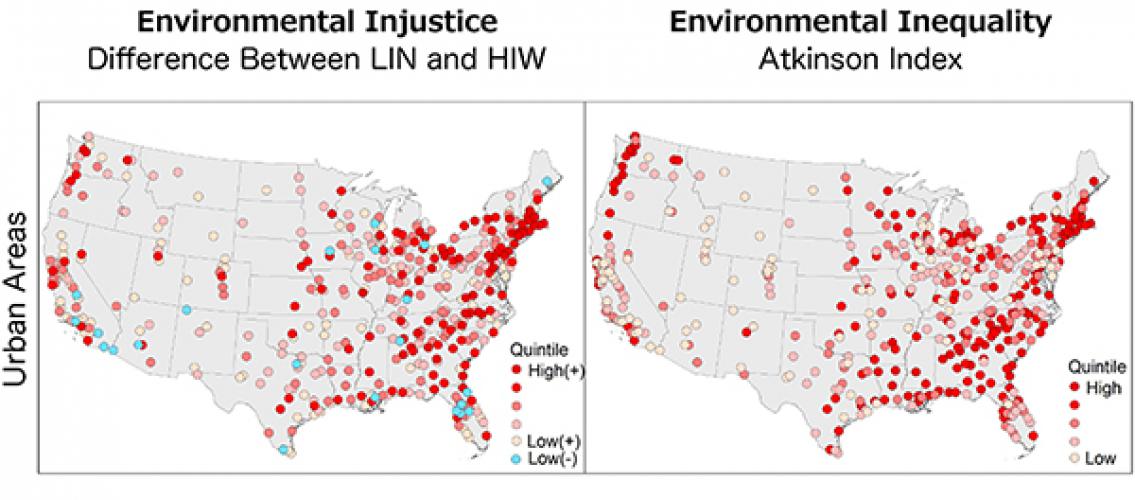
Among many other disadvantages, being poor often means that people are more likely to live in polluted environments. A recent study by MSI Principal Investigators Julian Marshall (an associate professor in the Department of Civil, Environmental, and Geo- Engineering, College of Science and Engineering, and Fellow of the Institute on the Environment) and Dylan Millet (an associate professor in the Department of Soil, Water, and Climate, College of Food, Agricultural, and Natural Resource Sciences, and Fellow of the Institute on the Environment), published in PLoS One, investigated disparities in health risks in a variety of areas within the US. This included regions, states, and cities. Specifically targeting the air pollutant NO2, one of the US EPA’s criteria pollutants, this research showed that poorer populations are more likely to be exposed to higher levels of NO2, which is related to poorer health. Poorer populations may also be more affected by pollutants because of compounding factors such as more limited access to health-care services.
While other studies about the relationship between pollution and socioeconomic status have been done within some cities, there is little data concerning broader patterns across the entire US. This research covered the contiguous US states, and also included both urban and rural areas. This research used US Census demographic data and a recently published high-resolution dataset of outdoor NO2 concentrations. The authors used MSI computational resources to process the data.
The results of this study showed that, within a given urban area, nonwhites are exposed to more NO2 than whites, and lower-income people are exposed to more NO2 than those with higher incomes. The comparative amount of NO2 that poorer populations and nonwhites are exposed to may have serious health implications. The results for counties and cities may give policy-makers means to determine how pollution-control efforts should be directed. The article can be read on the PLoS One website (Clark, Lara P., Dylan B. Millet, and Julian D. Marshall. 2014. National patterns in environmental injustice and inequality: Outdoor NO2 air pollution in the United States. PLoS One 9 (4) (APR 15): e94431.)
Image description: The left side shows differences in population-weighted mean NO2 concentrations between low-income nonwhites (LIN) and high-income whites (HIW), with large positive differences (red colors) indicating higher injustice (larger concentration difference between LIN and HIW). The right column shows the Atkinson Index (NO2 inequality), with higher values indicating greater inequality. This image shows results for urban areas in the contiguous US. (Image and description, L. Clark, et al., PLoS One 9 (4) (APR 15): e94431.)
posted on September 17, 2014